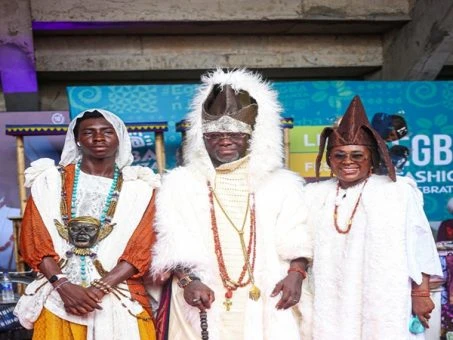 Gbemisola Oluwabusayo
1 month ago
Gbemisola Oluwabusayo
1 month ago
Overview
Egbaliganza: Lai Labode rewriting Egba, African history through fashion
When history meets innovation, something powerful happens. That’s precisely what Lai Labode is orchestrating with the launch of Egbaliganza—an audacious cultural renaissance that repositions the Egba people within national consciousness and on the global stage.
Born from a deep love for heritage and a futuristic vision for Africa, Egbaliganza debuted during the 2025 Lisabi Festival and has since captured national attention. But as Lai Labode clarifies, this is not just a fashion show—it’s a blueprint. “We’re not just wearing fabric; we’re wearing memory, leadership, and future aspirations,” he declared in an in-depth conversation.
Egbaliganza, derived from the phrase “Egba the Great,” is more than fashion—it’s a fusion of architecture, economy, storytelling, and cultural development. “We’ve always been a people of legacy,” Lai Labode said. “Now we’re bringing that legacy into today’s language: through fashion, art, and economic power.”
The initiative stands on five central pillars: symbolic fashion, economic empowerment, youth inclusion, heritage monument development, and Pan-African collaboration. And these pillars aren’t just theoretical—they’re already in motion.
“We made 840 pieces for the festival,” Lai Labode said proudly. “Each one tells a story—from Kurunmi, the warrior of Ijaye, to the royal cap Abetieye. Every item connects our past to our present and prepares us for a bold future.”
What makes Egbaliganza unique is its multidimensional structure. It isn’t just stitched in thread—it’s embedded in blueprints. “We’re rolling out a 50-year development plan for Egbaland,” Lai Labode explained. “This includes converting existing housing estates in Abeokuta into cultural destinations, erecting modern art domes, and developing heritage zones. Think Banana Island—but rooted in the African soul.”
Lai Labode believes deeply in the power of fashion as both an expression and a transformative tool. “In one of our designs, Ologun Asiko, the cap tilts to one side—historically used to hold charms. Today, that same cap is tied with symbolic knots to represent legacy. That’s our philosophy: honor the past, beautify the present.”
The economic ambition is no less bold. With a vision to build a $1 billion fashion and heritage economy from Abeokuta, Egbaliganza is integrating cotton farming, textile design, and export pipelines. “This isn’t just for show,” he emphasised. “We’re building a value chain—from farmers to fashion shows in Paris. Everyone must eat from this table.”
Source TheNation



